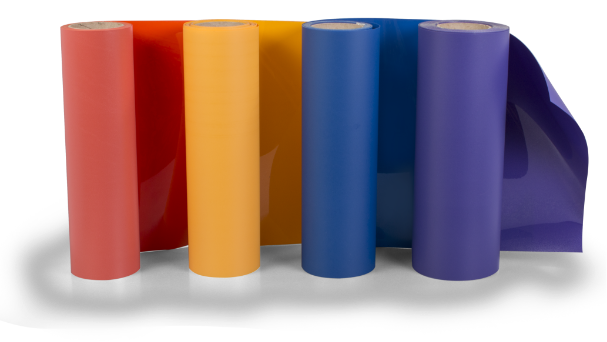
On a personal level, the grandkids keep Mary and me hopping. Here they are on the trampoline going through the spoils of their recent Easter egg scavenger hunt.
I recently attended an event where the speaker brought up the well-known analogy about dinosaurs and big businesses. The species that adapts faster to changes in the business environment is the one that survives. He is right, but I don’t think this necessarily means that all big businesses are unable to adapt or react quickly to change. Although controversial, it is now agreed upon by many scientists, that birds evolved from dinosaurs. So why we may not see a T-Rex walking around, there are perhaps adapted versions of the dinosaurs still with us. You don’t have to be a start-up or a small business to be flexible or successful. It remains up to each business owner to not only understand the type of products and services your customers want and need, but also understand HOW they want to buy from you. We all know that social media and online shopping is changing the way people shop. If you still haven’t adapted your business in any way to these changes in the environment, you have your head in the sand. Sure there are always going to be people, like me, who want to hold an actual printed book and enjoy reading a printed newspaper. “Old school” will always have its fans. But it’s not prudent to base your business model on the way things used to be. What’s clear is that your business must adapt–what’s unclear is what it will look like in the future. Are you ready to predict the future (although I think the writing is on the wall) and make a change? Over the years I’ve written on the topic “The Store of the Future” for many publications. Here’s part of one such article that I wrote at least 10 years ago, and it still holds true in many cases today:
I believe that this trend toward customer convenience, combined with digital graphic technologies and other concurrent trends are creating new opportunities for our industry. We have the opportunity today to sell our customers a wider range of personalized goods and services, to expand beyond garments and take care of all their imprintable needs. If we did this, we would be giving today’s time-pressed customers the convenience of one-stop shopping, while at the same time we would be adding more revenues to our bottom line.
As an example of how this might work, let’s take a small business that wants graphic material. That business may have a variety of needs – not only T-shirts, but maybe also jackets, hats, and even a magnetic sign for their car. Going a step further, they might want some lawn signs to advertise their company at worksites where they’re, say, building a garage or installing new windows. And speakingof advertising, they probably would like some personalized pens or other novelty items to hand out to prospective customers.
How many different stores would the customer have to go to, in order to obtain all these personalized goods? Quite a few, in most cases. But if one store could put it all together and make it easy for the customer by providing the complete package, they would not only get a greater share of that customer’s graphics dollar, they’d also be creating a very happy customer who would return to their store in the future. This would definitely be a win-win situation.
I used the example of a small business, but the same principle applies to virtually any type of customer in the market for graphics and personalized items. Take a family reunion. They’re going to need T-shirts with names on them, but they might also need some signs and banners, a commemorative item for people to take away like a mug, and maybe even some trophies for games and contests. Or how about a charity golf tournament? In addition to garments, they’ll need trophies, signs for hole sponsors, road signs, raffle items, and maybe tees and golf balls printed with the charity’s name.
As you can see, with a little suggestive selling, you have potential to get a lot of added business from virtually any customer who comes to your store for personalized items. Of course, to get complete orders like these, a store has to be able to show the customer a variety of products and alternatives. It can’t limit itself to one process such as screenprinting or embroidery, but must be able to provide a broad range of digital and heat printing services, including ink jet transfers, laser transfers, sublimation, CAD-CUT, vinyl sign cutting, and printing with DTG or direct-to-garment printers.
This branching into multi-services is my vision of the store of the future. In the years, ahead, fewer and fewer industry members will be “just” a screenprinter or “just” an embroiderer. The days of tagging a company for a process are over; the customer doesn’t care how you get it on that jacket or that hockey puck or that trophy plate, as long as it looks good, is priced right and is convenient. While personalized garments will most likely remain the number one draw, the store of the future will become an all-encompassing graphics center.
The store of the future will also make it easy for customers by showing them alternatives within a product category. For example, it will display shirts with decorations at different price points, and it will also show the customer different alternatives based on his/her needs. For example, a school buying T-shirts for Spirit Week is lookingfor speed and price. The garment doesn’t have to wash forever, so this would be a great use for ink-jet paper. But if it’s a three-season travel team uniform, then they’ll want something long lasting such as Thermo-Film or sewn twill.
I recently spoke to a graphics shop owner who is applying this store-of-the-future concept. He started in his basement six years ago with a single-head embroidery machine; today he operates out of a 5,500 sq. ft. facility equipped with nine embroidery heads, an 8-color automatic screenprinting machine, a 6-color manual screenprinting machine, four Cad-Cut cutting machines, three heat presses, two cap presses and, more. He provides everything from garments, to signs and banners, to novelties like pens and magnets. A 1,000 sq. ft. area of his building is used as a showroom for displaying samples of all the products he offers.
This storeowner told me of how he recently turned a $300 sale into a $4,000 one. A customer came into his store for some logowear. Using the customer’s artwork, the owner made up a sample magnet. The customer loved it, and because of this one sample, the storeowner wound up getting all the customer’s graphics business. He says this upselling and cross-selling of customers happens all the time. What’s more, he says, his customers tell him they would never even think of going anywhere else, because he can take care of all their needs.
This store of the future concept is nothing new – it’s a natural progression for our industry. I can recall as far back as 18 years ago seeing a store in Grayling, Michigan with a sign that read, “Team Uniforms, Embroidery, Screenprinting, Trophies, Sign Vinyl, Advertising Specialties, Mugs.” Because this store was in a low-volume rural area, it couldn’t survive on team uniforms alone. So the storeowner did the logical thing, which was to increase his volume by providing other services. He’s still doing a brisk business today, with the same sign, in the same location.
Although this cross-pollination of graphics services isn’t new, today there are a number of trends converging that are accelerating this transition. In addition to the customer’s desire for convenience, a second trend is oversaturation of the graphics market. This is causing margins on screenprinting and embroidery to fall, forcing smaller and medium-sized shops to look for other products they can sell to their existing customers. They’re finding that when they build up customers for one type of graphics products, these customers need other products, so they’re branching out.
There is more to this but I’m sure most of you stopped reading long ago…the short version–find out what keeps your customers coming back to you and make sure you are able to offer them more convenience than ever.



Ted, you hit the nail on the head 10 years ago. My embroider, Linda, does more and more of my advertising, just about everything but printing. My printer does everything but sports wear. They should merge and do everything I want.
Blair